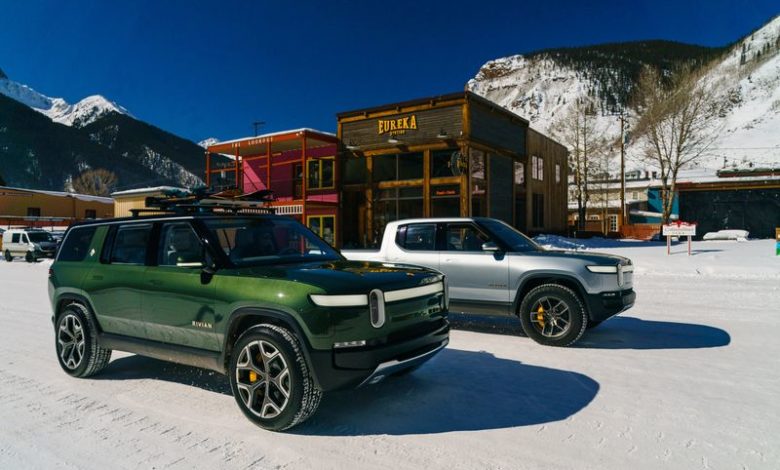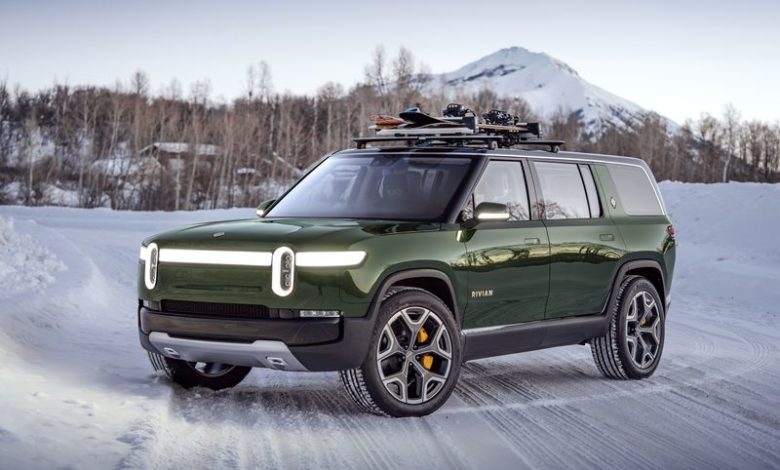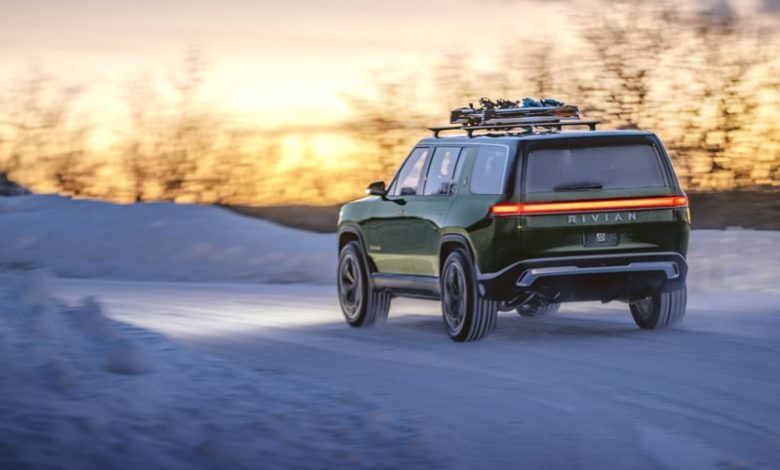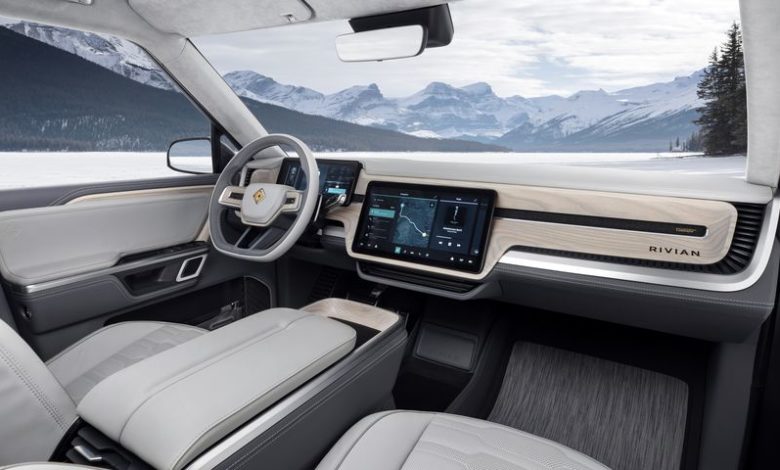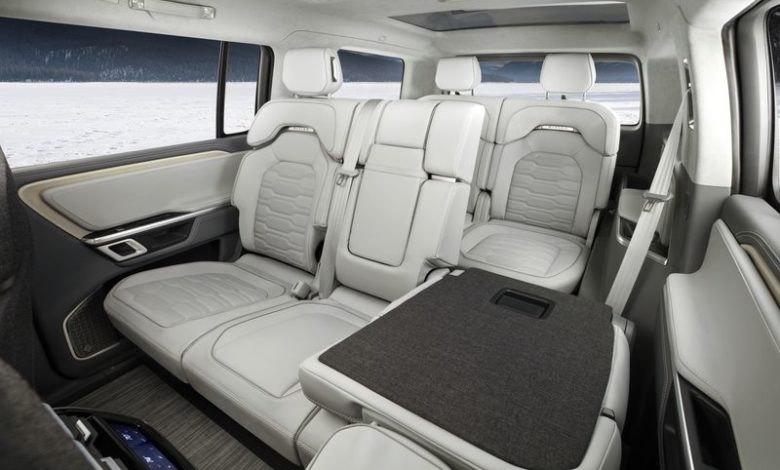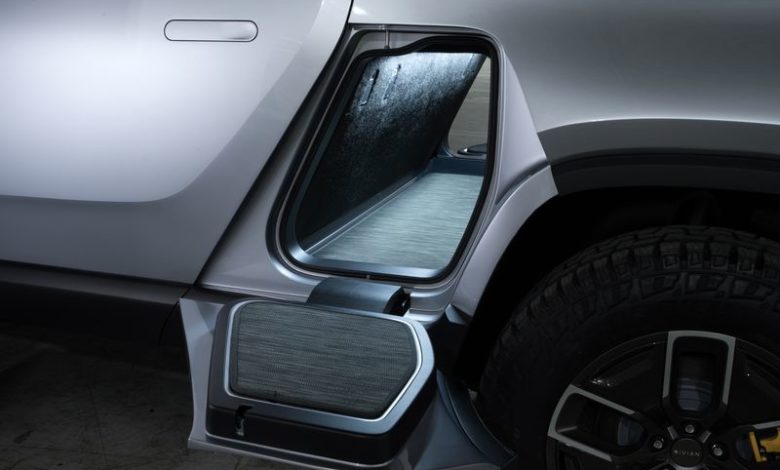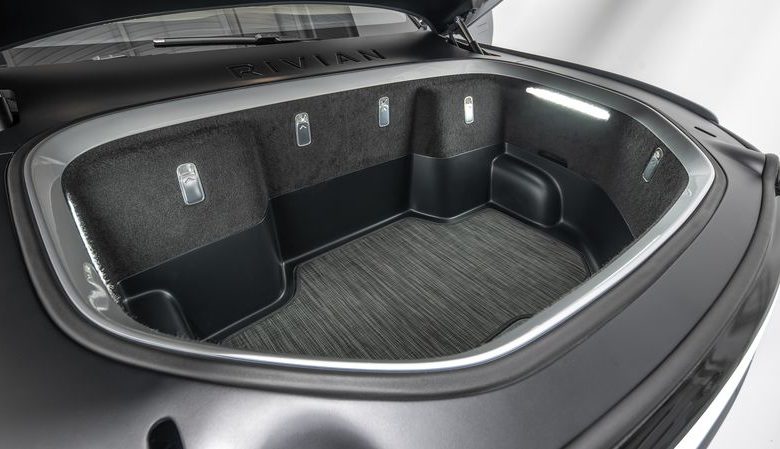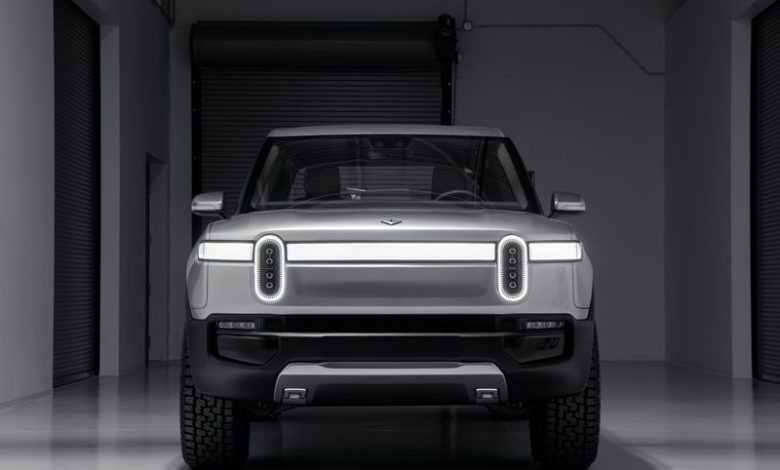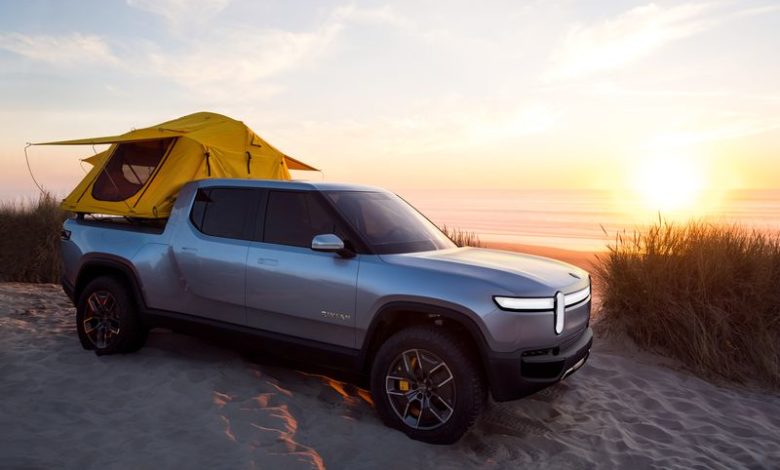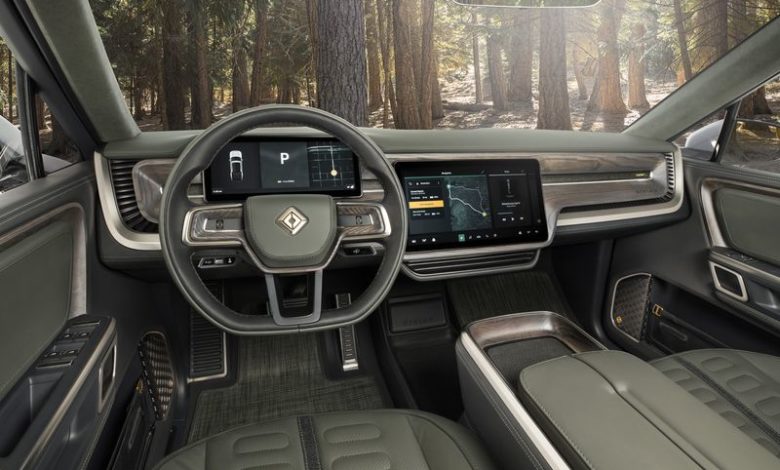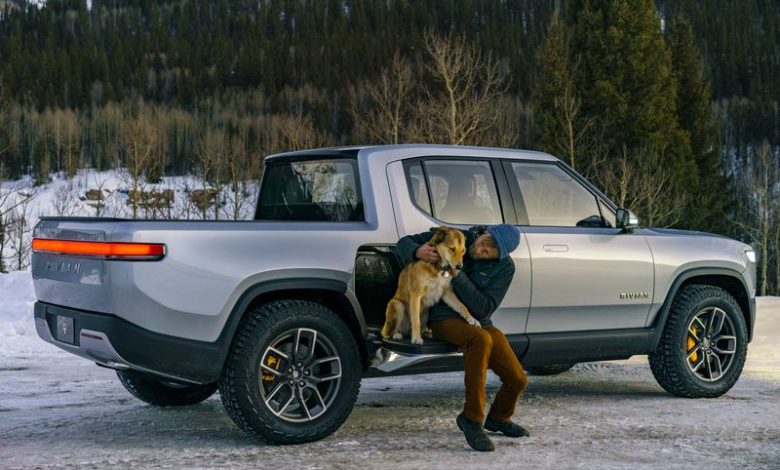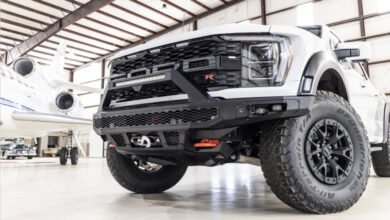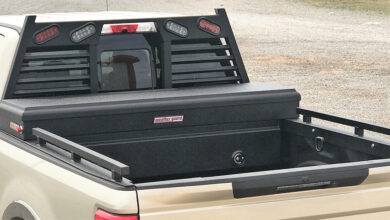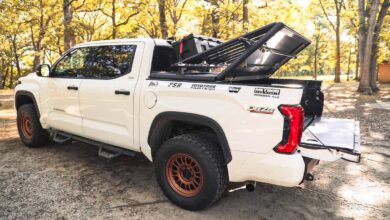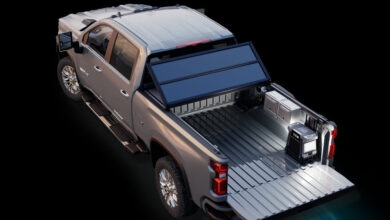Rivian Jolts Auto Market, Receives Large Amazon Investment
Amazon Bets Electric
Irvine, California-based Rivian in November debuted the first two off-road models it plans to deliver to customers in 2020. More than three months later, the electric car company announced Amazon led an equity investment round that raised $700 million.
Rivian, founded by RJ Scaringe, has developed its vehicles with adventurers at the core of every design and engineering decision. The company’s launch products, the R1T and R1S, deliver up to 400-plus miles of range and are designed to provide performance, off-road capability and utility. These vehicles use the company’s flexible skateboard platform and will be produced at Rivian’s manufacturing plant in Normal, Illinois, with customer deliveries expected to start in late 2020.
“We’re inspired by Rivian’s vision for the future of electric transportation,” said Jeff Wilke, CEO Worldwide Consumer at Amazon. “RJ has built an impressive organization, with a product portfolio and technology to match. We’re thrilled to invest in such an innovative company.”
Rivian will remain an independent company. Amazon led the most revent investment round, which includes participation from existing shareholders. Additional details about this investment were not disclosed.
The Models
Rivian’s Electric Adventure Vehicles line debuted at AutoMobility LA with the all-electric R1T, a five-passenger pickup, and the R1S electric SUV.
The R1T truck features a range of up to 400-plus miles, a wading depth of 1 meter, and the performance and precise control of quad-motor AWD, according to Rivian.
“I started Rivian to deliver products that the world didn’t already have; to redefine expectations through the application of technology and innovation,” said CEO RJ Scaringe.
Skateboard Platform
The foundation of the R1T and R1S is Rivian’s skateboard platform, which efficiently packages the battery pack, drive units, suspension, braking and thermal system all below the height of the wheel, leaving the space above for occupants and their gear, according to Rivian.
Beyond the packaging benefits, the architecture delivers a low center of gravity that supports the vehicle’s agility and stability. Adding to these inertial advantages is a sophisticated suspension architecture with unequal length double wishbone suspension in the front and a multi-link suspension in the rear.
The suspension features dynamic roll control and adaptive dampers along with ride-height adjustable air-suspension, allowing the suspension to be adjusted for highway comfort, on-road performance or off-road capability, according to Rivian.
The vehicles also feature a quad-motor system that delivers 147kW with precise torque control to each wheel, enabling active torque vectoring and maximum performance in every situation, from high-speed cornering to low-speed rock crawling. With 3,500 Nm of grounded torque per wheel (14,000 Nm of torque for the full vehicle), the R1T can reach 60 mph in 3 seconds and 100 mph in less than 7 seconds. This powertrain and chassis also enable the R1T’s tow rating of 11,000 pounds.
Exterior
Rivian’s vehicles have been designed to communicate strength and refinement while still inviting customers to get them dirty, according to the company.
The main bodyline of the R1T wraps up and around the cab and gives the vehicle a distinctive silhouette, while highlighting the Gear Tunnel cutline and accentuating the rear fender flares. The R1T features short overhangs, high ground clearance and aggressive approach and departure angles for a confident and rugged stance, all enabled by Rivian’s skateboard platform. A Rivian will be quickly recognized with its signature stadium headlights and a daytime running light that extends the entire width of the vehicle.
Interior
The Rivian interiors welcome occupants into an environment that conveys craftsmanship yet invites rugged, daily use, according to the company. Color and materials play an important role in differentiating Rivian vehicles.
Sustainably sourced wood is used throughout the interior and its natural finish contributes to a warm feel. The most striking use of wood is as a structural element in the dash that integrates the main center display and driver cluster. High-wear areas of the interior feature materials inspired by sportswear and active gear.
“Although the exterior of the vehicle is what first attracts you, the interior is where you spend the most of your time, so we really focused on creating a transformational space,” said Jeff Hammoud, vice president of vehicle design. “The biggest challenge was creating an interior design that delivered a premium experience, while still being comfortable as a space that is heavily used. To do this, we looked outside the automotive industry and took inspiration from contemporary furniture, as well as hiking and outdoor gear, to drive the design.”
Utility
The R1T truck leverages the vehicle architecture to deliver more lockable storage than any other pickup in the world, according to Rivian. The 330-liter front trunk is easily accessed for daily use with the hood fully powered for opening and closing.
The R1T’s lockable Gear Tunnel sits below the cab, and extends across the width of the vehicle, providing more than 350 liters of space for hauling oversized gear, such as snowboards, golf bags or strollers.
The Gear Tunnel doors also act as steps for loading items into the bed or onto the roof, as well as a seat and a convenience platform for such as lacing up hiking boots. The R1T has a watertight, integrated tonneau cover and beneath the bed floor is a 200-liter sealed bin that can also be used to store a full-size spare tire. The bed features three 110-volt outlets and integrated compressed air.
As part of a Gear Guard feature, the bed also has two integrated locking cables to safely secure bicycle frames and other gear to the bed. Any gear stored in the bed is monitored by a bed camera and the system alerts owners should the bed or contents be tampered with.
Rivian has developed a telescoping racking system with easy-to-use mounts that quickly attach to the roof as well as the bed rails and bed floor. The racks integrate with a range of accessories including tents, travel containers and bike/ski racks. When not in use, the racks can be easily stored in the front trunk.
Battery System
Rivian’s energy-dense battery module and pack were developed with the most demanding journeys in mind, incorporating tough underbody protection and an advanced cooling system, according to Rivian.
Adaptive control algorithms learn driver behavior, optimizing user-specific battery management for maximizing battery life, reliability and second-life reusability, according to Rivian. Three battery sizes are planned, with the 180 kWh and 135 kWh available at launch and a 105 kWh being made available within six months.
The battery is designed for fast charging with charging rates of up to 160kW. This enables approximately 200 miles of range to be added in 30 minutes of charging. In addition to DC fast-charging, an 11kW onboard charger facilitates rapid charging at a Level 2 charger.
Connectivity and Digital Experience
Rivian has developed its connected car platform from a clean sheet to allow full control and flexibility over the vehicle hardware, software and user experience. The system operates on a high-speed Ethernet backbone that enables robust security, according to Rivian.
This platform supports granular over-the-air updates of vehicle software to enhance functionality and improve performance. All Rivian vehicles connect to a cloud-ecosystem for data exchange and processing, enabling machine learning and data services.
The digital experience extends beyond the vehicle into the cloud ecosystem and mobile/web applications and provides a consistent and seamless interface for vehicle status and control, according to Rivian. The in-vehicle experience consists of a custom 15.6-inch center touch screen, 12.3-inch instrument cluster and a 6.8-inch rear touch screen. Rivian developed maps, music, navigation and other adventure-focused features to complete the digital experience.
Self-Driving
The R1T will launch with a robust hardware suite with multiple modalities including camera, lidar, radar, ultrasonic and a high precision GPS coupled with high definition maps, according to Rivian. This hardware enables Level 3—meaning hands-off wheel , eyes off raod—autonomy for highway operation. Beyond the highway Level 3, the vehicle will have a range of self-driving features focused on enabling active lifestyles.
Safety
Rivian’s safety systems and body-structure design will deliver IIHS Top Safety Pick Plus and NHTSA 5-Star ratings, according to Rivian. Safety features include eight airbags for occupant protection and reinforcements of the skateboard platform to protect the battery. The R1T and R1S will also be offered with a full complement of active safety systems enabled by Rivian’s suite of self-driving sensors.
